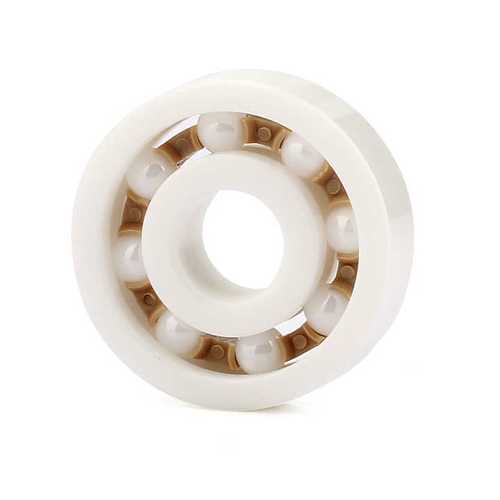Precision Ceramic Bearings: Applications, Benefits, and Maintenance Guide
Precision ceramic bearings are advanced mechanical components designed for high-speed, high-temperature, and corrosive environments. Made from silicon nitride or zirconia, these bearings offer superior durability, reduced friction, and electrical insulation compared to traditional steel bearings. They are widely used in aerospace, medical equipment, and industrial machinery where performance reliability is critical.
1. precision ceramic bearings applications2. benefits of ceramic bearings
3. ceramic vs steel bearings comparison
4. how to maintain ceramic bearings
5. best ceramic bearings manufacturers
1. Precision Ceramic Bearings Applications

Precision ceramic bearings are indispensable in industries requiring extreme performance. In aerospace, they ensure smooth operation in jet engine turbines and satellite mechanisms. Medical devices like MRI machines rely on their non-magnetic properties. High-speed CNC machines use them to minimize heat generation, while electric vehicles benefit from their electrical insulation. Their corrosion resistance makes them ideal for marine equipment and chemical processing plants. These applications demonstrate how ceramic bearings solve challenges traditional bearings cannot handle.
2. Benefits of Ceramic Bearings
Ceramic bearings outperform steel counterparts in multiple aspects. Their lightweight nature reduces rotational mass by 40%, enhancing energy efficiency. Silicon nitride's hardness (HV 1500-1700) triples steel's durability, extending service life 3-5 times. Non-conductive properties eliminate electrical arcing risks in motors. They operate in temperatures from -200°C to 1000°C without lubrication degradation. Corrosion resistance allows use in acidic/alkaline environments where steel bearings fail. These benefits translate to lower maintenance costs and improved system reliability across applications.
3. Ceramic vs Steel Bearings Comparison
When comparing ceramic and steel bearings, key differences emerge. Ceramic bearings weigh 60% less, reducing inertial losses. Their elastic modulus (310 GPa vs 210 GPa for steel) improves dimensional stability under load. Thermal expansion coefficients (3.2×10⁻⁶/°C vs 11×10⁻⁶/°C) make them better for temperature fluctuations. While steel bearings have higher load capacity (Cr 10kN vs 7kN for ceramics), hybrid designs combine ceramic balls with steel races for balanced performance. Cost differences (3-5× higher for full ceramics) justify themselves through 8-10× longer lifespan in harsh conditions.
4. How to Maintain Ceramic Bearings
Proper maintenance maximizes ceramic bearing lifespan. Clean using non-chlorinated solvents to prevent surface degradation. Avoid ultrasonic cleaning with steel components to prevent chipping. Relubricate every 500-800 operating hours using PFPE-based greases. Monitor vibration levels; acceptable thresholds are 0.5-1.0 mm/s RMS for small bearings. Store in dry environments (RH <40%) with desiccants. When installing, use ceramic-compatible tools and apply <25 Nm torque. Regular infrared inspections detect abnormal temperature rises (>15°C above ambient indicates issues). Following these protocols can extend service intervals by 300% compared to improper maintenance.
5. Best Ceramic Bearings Manufacturers
Top ceramic bearing manufacturers include SKF Ceramic Bearings Division, Boca Bearing Company, and Ortech Advanced Ceramics. SKF offers ISO 26602-compliant hybrid bearings for industrial use. Boca specializes in miniature bearings for robotics and RC models. Ortech provides fully ceramic options for extreme environments. Key selection criteria include: ISO 9001/14001 certification, radial play tolerance (±0.001mm), surface roughness (<0.05μm Ra), and load rating verification. Leading manufacturers provide 3D CAD models and computational life predictions. Always verify material certificates (ASTM F2094 for silicon nitride) and request salt spray test results (500 hours resistance).
From understanding diverse industrial applications to comparing performance metrics with steel alternatives, this guide covers essential aspects of precision ceramic bearings. Whether you're exploring maintenance best practices or evaluating top manufacturers, these insights help optimize bearing selection. The following sections detail installation techniques, failure analysis methods, and cost-benefit calculations to further inform your decision-making process.
Precision ceramic bearings represent a technological leap in motion control solutions. Their unique material properties address limitations of conventional bearings, enabling breakthroughs across industries. By implementing proper selection criteria and maintenance protocols, engineers can significantly improve system efficiency and reduce lifecycle costs. As material science advances, ceramic bearings will continue revolutionizing high-performance mechanical systems worldwide.




 13869596835
13869596835